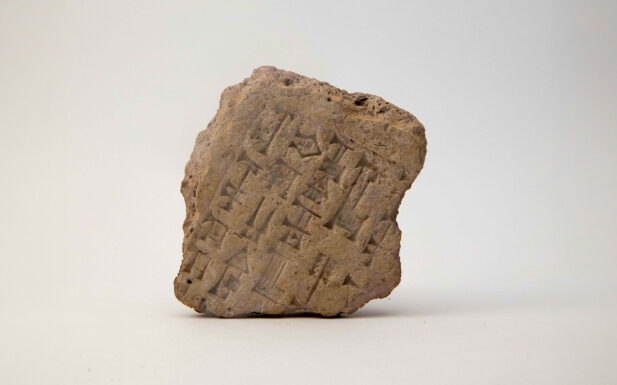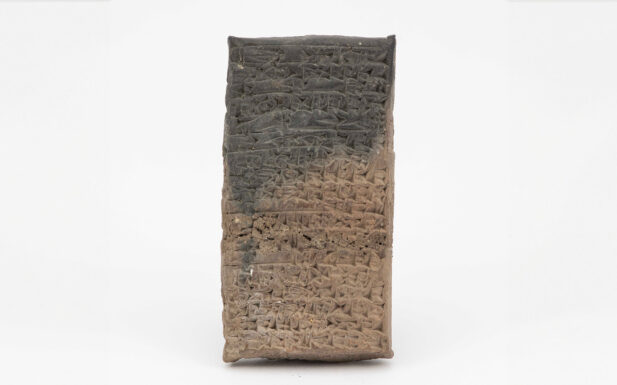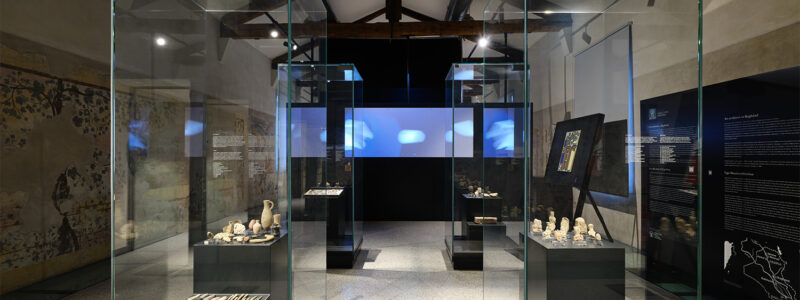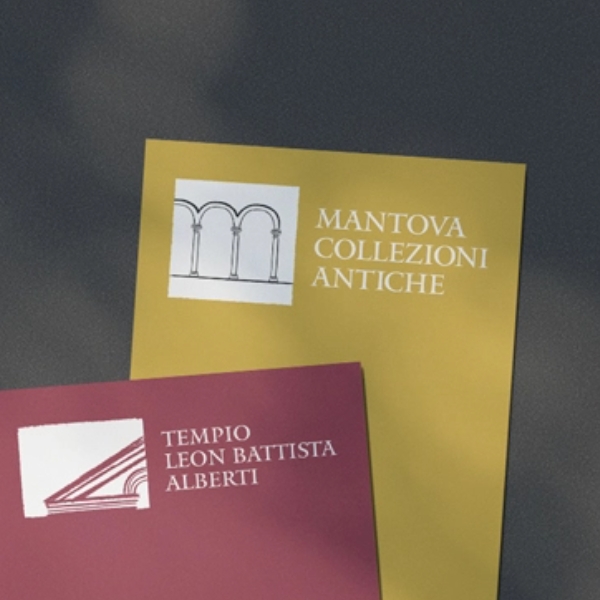Mesopotamia was a very rich and fertile land, suitable for technological, economic and social progress. The negative constant, however, was the shortage of raw materials.
The soil offered clay, cane and bitumen, while minerals, good stones and timber were lacking.
In the archaeological finds from the first sites of occupation, tools made of flint, which was easily available on site, are frequent.
Among the prehistoric artefacts collected by Ugo Sissa at Tepe Gawra, some objects of particular interest are those that relate to the daily activities and customs of the Mesopotamian peoples; this is the case with loom weights (no. 9) and sling bullets (No. 8). Also curious is an eyedropper specimen (no. 10) – which corresponds to the type described by Abul Casis in one of his famous medical treatises – and a jar containing perfumed oil that has a hole in the side, useful for extracting the ointment (no. 6).
The ceramic fragments that enrich the collection are a testament to the technical expertise on the potential of the use of terracotta, given the varied decorative typology.
The sickle (no. 11) – from Eridu (southern Mesopotamia) and datable to the 4th millennium BC. – is an object used for mowing, while from the 3rd millennium BC is the splendid mace head made of polished pink stone (no. 2) – possibly a votive object – and a stone plumb bob used to determine levels, decorated at the end with a lion’s head (no. 7).







